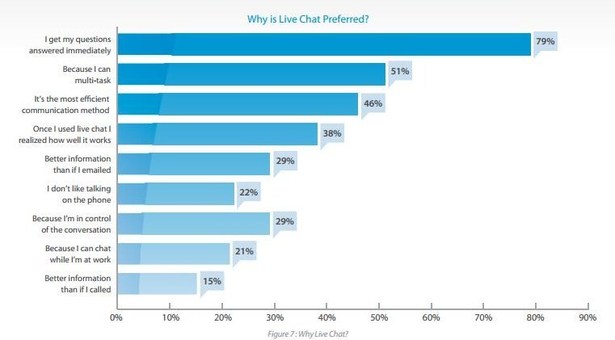How To Convert Your Website Visitors To Leads and Clients
So you’ve invested time and money into building a nice website for your business, you’ve also implemented SEO and other digital marketing strategies to get traffic to your website. Great!
However, inasmuch as website visits are a good thing, it’s definitely not the ultimate goal. You want visitors to your website to perform an action that will convert them to leads. It’s the leads you will follow up with till they end up as paying customers.
Now how do you achieve this? Do you have a strategy that converts visitors to leads?
This is what we’ll be discussing in this article. By the end, you’ll know the various strategies you can use to convert website visitors to leads. Let’s dive right in!
1. Lead Magnet
How many times have you dropped your information like name, email, or phone number on a website in exchange for something valuable such as a free trial, an ebook, free product, checklist, etc. All these are called lead magnets.
According to Investopedia,
A lead magnet is a marketing term for a free item or service that is given away for the purpose of gathering contact details; for example, lead magnets can be trial subscriptions, samples, white papers, e-newsletters, and free consultations.
Lead magnets are very effective in converting visitors to leads. However, for you to have a high visitor-lead conversion rate, you must ensure that your lead magnet is:
- Specific: You have to create a lead magnet that will target a specific market. It’s better to have 1000 people who are ready to move further down your funnel than 10,000 people who couldn’t care less about your business.
- Quickly Consumable: No one wants to read a 200-page ebook or a 20 days email course on digital marketing. They want something they can consume within a few minutes to hours. So when creating an ebook, make it short and straight to the point else, the purpose will be defeated.
- Well Packaged: Even if the lead magnet is free, you still have to package it in a way that anybody who gets it will be grateful to get it for free.
Once the visitors enter their contact information in exchange for your lead magnet, it’s up to you to decide how you want to follow up with them.
2. Landing Page
Another effective way of converting website visitors to leads is through a landing page.
What’s a Landing Page?
Unbounce defines it as a standalone web page, created specifically for the purposes of a marketing or advertising campaign.
How Is It Different From A Home Page?
A landing page is different from a homepage in the sense that it contains a specific message, a form, and a call to action button that directs visitors on the next step to take.
The main use of a landing page is to capture the details of visitors on your landing page.
A homepage contains different links that cater to the overall public and serves as a distraction which will definitely reduce your conversion rate.
A customer who is supposed to take an action on your homepage may click on a video or a link that redirects to another page. Chances are the visitor may never take that action again.
But with a landing page, the visitor has only one action to take which is usually clearly stated.
7 Landing Page Tips for Higher Conversion Rate
- Your landing page should serve a single purpose and the message should be clearly stated.
- Use videos. They improve conversion by 80%.
- Make your call to action big, obvious, and positioned in the center.
- Ensure the content of the landing page matches the ad visitors clicked on.
- Use arrows or photos of people pointing to your Call To Action button.
- Add testimonials if you have any.
- Lastly, A/B test, measure and optimize your landing page for better conversion rate.
3. Opt-in Form
When people visit your website, remember the goal is to get them to convert to leads. Whether it’s through a lead magnet or a landing page, the key to achieving this goal is with an opt-in form.
Bigcommerce defines opt-in form as
A form of consent given by web users, acknowledging interest in a product or service and authorizing a third party to contact them with further information.
You need different elements that will draw the attention of visitors and increase conversions. You can A/B test to determine the one that has a higher conversion rate.
The length of the form will depend on your marketing objective. If you want to generate plenty of leads, then short forms work best. However, if you want a few but qualified leads, it’s better to use a longer form with specific fields.
Opt-in forms are basically for lead generation or newsletter subscriptions. But many brands use opt-in forms for various purposes such as discounts, coupon codes, webinar invites, exclusive contents, free trials, free shipping, free ebooks, etc.
As with lead magnets, when you offer visitors something of value in return for their contact information, they are more likely to fill a form. In other words, the best way to get them to convert is by offering valuable incentives no matter how little.
Exit intent opt-in forms are very good for generating leads. They increase conversions by 5-10% when used correctly.
They pop-up just when visitors are dragging their cursor toward the “close” button on their screens.
They are basically used to get newsletter signups, offer discounts, or lead magnets.
As a beginner, there are a lot of things you need to know about opt-in forms.
Read more here: Beginner’s Guide to Opt-in Forms
4. Live Chat
Another effective way of converting website visitors to leads is with live chats.
People will visit your website for various reasons. It makes so much sense to chat with them in real-time and get them to take an action.
As a matter of fact, it can increase your website conversions by 45% because you are providing immediate assistance.
It allows you to build a personalized relationship with your website visitors.

From the graph above 79% said they preferred live chat because they get their questions answered correctly. This goes to show that it’s the information on your website may not be enough for visitors.
Roughly 44% of online customers say that having questions answered by a live person is one of the most essential features of a website.
In other words, answering a question can be the difference between getting a lead and the visitor never returning to your site again.
Some of the popular live chat software include:
5. Call To Action (CTA)
If you noticed, there are several mentions of CTA in this article. It’s so important it makes our list.
Optimizely defines it as
A prompt on a website that tells the user to take some specified action. A call to action is typically written as a command, such as ‘Sign Up’ or ‘Buy Now’ and generally takes the form of a button or hyperlink.
When people visit your website, those who show a level of interest in your product or service want to know the next step to take. If there is no clear CTA, they will leave your website never to return. A CTA makes it easy for visitors to move down the funnel by performing a particular action.
Examples of Call To Action
If you want people to sign up for your newsletter, the CTA will be
- SIGN UP NOW
- LEARN MORE
- SUBSCRIBE NOW
- GET FREE UPDATES
If you want them to download an ebook or checklist, the CTA will be
- DOWNLOAD NOW
- GET MY FREE EBOOK
- SEND ME THE CHECKLIST
For an eCommerce store, the CTA will be
- ADD TO CART
- BUY NOW
- ADD TO WISHLIST
- CHECKOUT
The important thing is the user performs the desired action that will lead them further down the conversion funnel.
Qualities of A Compelling Call To Action
- Visibility: It must be BIG, CLEAR, and EASILY NOTICEABLE.
- Design: It must have a separate colour from the rest of the content on your website or landing page.
- Benefit: it must state what the user will get after clicking it.
- Reasonable length: It mustn’t be too short or too long. For example, “Send My Checklist” is better than “Download”.
It’s best to A/B test your CTA to know which one generates more conversions. You can change the colour, text, number of words, etc.
In Conclusion
We’ve shared 5 effective ways to convert website visitors to leads. We hope you’ll be able to use them to increase your visitors-leads conversion.
As a recap, here they are:
- Lead Magnet
- Landing Page
- Opt-in Form
- Live Chat
- Call To Action
Note that it’s important to track, A/B test and optimize for better conversions.
If you need help or guidance to increase your lead generation, simply Contact Us.
Do you have questions or comments concerning lead generation? Please feel free to leave a reply below.





